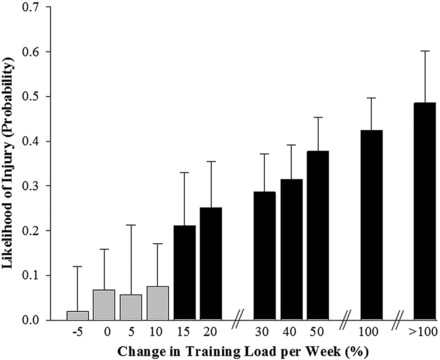There are so many reasons to get into running – whether it is to see the health benefits that come with it, you’ve made a New Years resolution that you’re finally coming around to, or you genuinely enjoy the activity – regardless of what your reasons are, we’re going to take you through some simple ways to reduce the risk of a running injury.

Author of this post, Aidan Rich, completing the team’s event at the Surf Coast Century trail run
1. Keep most of the running ‘easy’
Most of your running should be at a comfortable pace where you can maintain a conversation and this may mean incorporating some short regular walk breaks.
Keep the ‘hard’ running to 15-20% of your distance for the week at most, for example, if you are running 40 km per week, 6-8km only should be at a faster pace.
A sample program for a 40km/week runner might be:
- Tuesday – 8-10km including 4 x 1km hard with 90 seconds jog in between
- Wednesday – 6km easy
- Thursday – 8km including 8-10 x (1 minute hard, 1 minute easy)
- Sunday – long run 16-18km
2. Vary the running environment
Your body is fantastic at adapting and does this best when exposed to lots of different stimuli.
Do some running on hills, flats, grass, gravel and maybe some trails.
Just be careful with too much running too quickly on the road or the athletics track as these have higher forces on the body.
3. Gradually increase your training load
Running is a high impact sport and increasing too quickly can cause problems with tendons, bones and joints.
Increasing by 10% per week is a common rule of thumb, and recent research has shown this to be a good measure of the risk of injury

How do you measure the training load?
One of the best ways is to use rating of perceived exhaustion method (RPE), a 0-10 scale that starts at 0 (no effort at all) to 10 (maximal effort).
For example, a 40 minute run at an RPE of 5 would give 200 units of work.
To avoid building up your running too quickly, aim to increase your load by no more than 10% each week.
4. Get lots of sleep!
Sleep is the number one recovery tool, with many studies showing a strong link between sleep and performance/injury risk.
Start creating good habits to maximise your sleep such as limiting caffeine later in the day, and minimising use of screens within 1-2 hours of bed time.
5. Use rest days
If you are relatively new to running, it’s best to have at least 2 days of no running per week.
Running one day on, one day off is often a good starting point.
More intermediate runners may have their no running days after a hard session (such as intervals or a long run).
Adding in some light cross-training (such as cycling or swimming) can be a great way to actively recover as well as build cardiovascular fitness without the impact that running involves.
Get your comprehensive running assessment completed at your closest Lifecare clinic.

